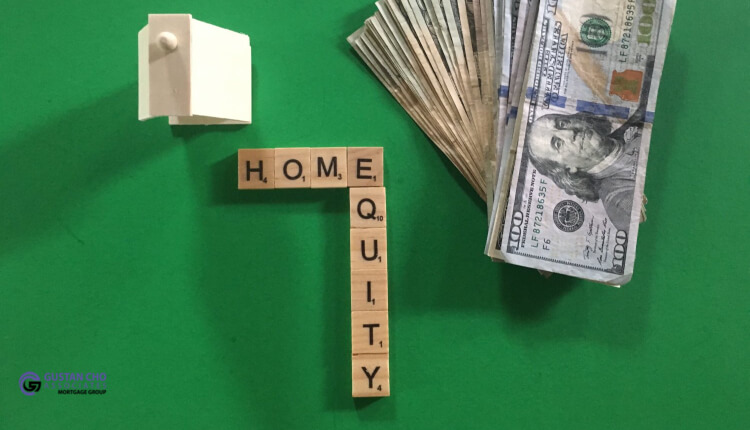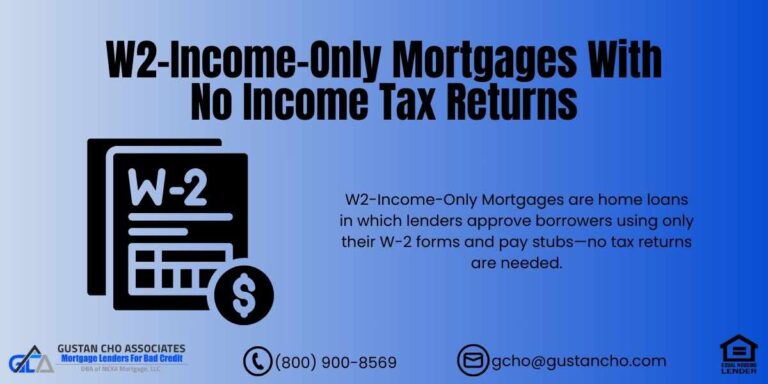How Does Home Equity Line of Credit Work
This guide covers home equity line of credit, or HELOCs, and how they work. Homeowners with sufficient equity in their home may be able to qualify for a home equity line of credit, also referred to as a HELOC. Most homebuyers put very little money down on a home purchase. Chances are very slim new home buyers will be able to get a home equity line of credit right after closing on their home loan. HELOC stands for a home equity line of credit. Dale Elenteny, a senior loan officer with Mortgage Lenders for Bad Credit, says the following about home equity line of credit and how it works:
It is different from a home equity loan. HELOC allows homeowners to use it and pay it off whenever they want, like a revolving line of credit. A home equity loan: the bank will give homeowners a lump of cash at once, similar to an installment loan.
A home equity loan works in a different way than a home equity line in the sense that once you pay off the balance of the home equity loan, you cannot reuse it like a line of credit. A flexible borrowing option that may allow you to utilize any equity built up in your home is referred to as a **Home Equity Line of Credit (HELOC)**. Think of it as a credit card secured by your house. With a HELOC, you are given a revolving line of credit to draw from as needed instead of getting a lump-sum loan. Here’s how it works, step-by-step, as of March 26, 2025:
What Is a HELOC?
- Definition: A HELOC is a secondary mortgage that allows you to borrow against your home equity, which is the home’s value minus what you owe, using it as collateral.
- Equity: If your house is $400,000 and you have a $200,000 remaining mortgage, you hold $200,000 in equity.
- Revolving Credit: For example, a period where a credit lump is set,$100,000.. You can borrow, payback, and re-borrow as long as your limit isn’t exceeded.
Unlock Your Home’s Potential with a HELOC
Apply Now And Get recommendations From Loan Experts
How Home Equity Line of Credit Works
Application and Approval
- Apply with a lender you choose, such as a bank, credit union, or online provider.
- A lender considers your equity, credit score (above 620 is most likely required), debt-to-income ratio (DTI, usually capped at 43% max), and income.
- Confirm your home’s valuation with an appraisal to get the current market value.
Credit Limit on Home Equity Line of Credit
- Usually, lenders allow you to borrow anywhere from 80% to 85% of your home’s value, deducting your mortgage balance.
- For high-quality applicants, some lenders will extend that to 90%.
- For example, a $400,000 home value x 85% = $340,000.
- After subtracting the $200,000 that is owed to the lender, the maximum HELOC is $140,000.
Draw Period of Home Equity Line of Credit
- Increases by 5 to 10 years, depending on the lender.
- The ability to borrow cap allows you to withdraw from a debit card, checks, or online transfers, all of which are subject to set limits.
- Only the portion withdrawn from the credit line is interest-bearing (i.e., a $20,000 withdrawal incurs interest, not the capped $140,000 amount).
- You may make principal repayments at your discretion during this phase, although these payments lead to more readily available credit.
Repayment Period of home equity line of credit
- This phase lasts 10 – 20 years after the draw period.
- No.
- In the previous phase, all borrowing privileges were canceled.
- Repayment became free, and interest accumulated on the balance owed.
- Estimate total payments to significantly increase with this phase due to having full debt instead of interest only.
Interest Rates on Home Equity Line of Credit
- It is changeable and linked to measures such as the prime rate (1% added to HELOC).
- As of March 2025, the expected figure for prime value will be close to 7%.
- Therefore, the rates for HELOC will constitute 7.5%—9%.
- Fixed rates are available for portions of the balance, with some lenders providing set policies that guarantee stability.
Costs and Fees
- Upfront: Application fees ($0-$500), appraisal ($300-$500), closing costs (0-2% of the line. Often waived by lenders).
- Ongoing: Annual fees ($50-$100), inactivity fees (if applicable), and interest on borrowed funds.
- Prepayment: There is no penalty for paying off early but check the specific terms. Most HELOCs don’t charge a prepayment penalty.
HELOC: Example in Action
- Setup: Home value $400,000, mortgage $200,000, equity $200,000. Approved for a $140,000 HELOC at an 8% variable rate.
- Draw: In the first year, you take a $30,000 loan for renovations. Your monthly interest-only payment equals $200. $30,000 times 8% divided by 12 equals $200.
- Repay: You pay back $10,000 during the draw period. You are now in debt for $20,000. This means interest will drop to $133/month. You can borrow up to $10,000 if needed..
- Repayment Phase: After 10 years, you will have $20,000 left. Payments will be approximately $191 monthly, with a 15-year repayment term at an 8% interest rate and blended principal.
Uses OF Home Equity Line of Credit
- Common: Emergency expenses, debt, school, medical funds, or home renovations. Their value boosts equity.
- Not Allowed: Some lenders do not allow certain uses (e.g., business investment or speculative).
Pros of home equity line of credit
- Flexibility: You can borrow only when needed..
- Lower Rates: More affordable than credit cards or personal loans (8% vs. 15-25%).
- Interest Deduction: Interest can be deducted from taxes if applied to renovating the home (talk to a tax expert).
Cons of Home Equity Line of Credit
- Risk: Collateral of your home puts you at risk for missed payments and foreclosure.
- Rate Hikes: Rates tend to have an upward limit. For example, if the prime rate rises to 8%, your 8% HELOC rate increases to 9%.
- Payment shock is the budget strain that occurs when a specific fee starts to be paid (when the principal repayment starts).
- Equity Drain: Reduces the cushion you have for your home if its value declines.
Eligibility (as of March 2025)
- Equity: Must have 15-20% equity remaining after the first mortgage.
- Credit: Minimum of 620, though 680 will qualify you for less expensive rates.
- DEBT-TO-INCOME (DTI): It is under 43%, but some lenders with strong profiles reach 50%.
- Loan-to-Value (LTV): The combined LTV of the first mortgage and HELOC is usually capped at 85%.
Difference from a Home Equity Loan
- HELOC: Revolving credit with a variable rate with an interest-only option during the draw period.
- Home Equity Loan: The lump sum amount is given with a fixed rate, and immediate principal and interest payments are charged.
Unlock Your Home’s Equity with a HELOC Now!
Access funds for home improvements, debt consolidation, and more!
Trends Monitoring: March 2025
Although more expensive than first mortgages, HELOCs remain convenient for homeowners not looking to do a full refinance. According to industry data, demand supports this as it has increased 10% year-over-year as people look to fund renovations or consolidate debt during a cooling economy.
Steps to Obtain HELOC Credit
- Optimize: Compare 3-5 lenders, including banks, credit unions, or online platforms, for the best interest rates and competitive fees/withdrawal/payback schedules..
- No Obligation Checks: Figure out your possible limit without undergoing a credit score hard pull..
- Formalize Documents: Provide payslips, details of your mortgage, and approval for an appraisal assessment. Expect a 30-45 day timeline to close after this,’
- Utilizing a HELOC can be advantageous if the user has equity in their home and discipline to avoid overspending. However, it can become a financial risk if not navigated carefully. What is your intended expenditure? Home renovations, debt, or other plans?
Equity Required To Qualify For Home Equity Line of Credit
Homeowners who have owned a home for some time, check to see if the home has appreciated in value. Many home values have increased significantly over the past few years. Many counties in dozens of states throughout the United States have seen property values increase by double digits in the past several years. People in areas where they have seen extensive appreciation are sitting on home equity they can utilize to draw against with a home equity line of credit.
Qualifying For A HELOC
Banks will fund a home equity loan to a homeowner who has sufficient equity in their home. Home equity lenders will base their lending decision on the credit and financial profile of their borrower and the equity the borrower has in their home. Home equity loans and home equity lines are known as second mortgages. Second mortgages are when a lender stands in a second lien position to the property behind the first mortgage lender. By being on a second lien position, the lender stands to hold greater risk than the first mortgage lien holder
In the event that the homeowner defaults on the first mortgage, the second lienholder stands a greater risk of not getting paid on their collateral if there is not enough money to pay off the first lienholder. The second mortgage lien holder can pay off the first mortgage lien holder and acquire the property. But this is not often the case. This is because there is normally not enough funds from foreclosure even to pay off the first mortgage lien holder in full in cases of foreclosures.
How Much Can You Borrow On Home Equity Line Of Credit

The maximum amount homeowners can borrow on a home equity loan depends on how much equity they have in their home. Depends on the loan-to-value of the property. Every second mortgage lender has their own standards and guidelines. Some second mortgage lenders may cap the debt-to-income ratios at 40%. While others may cap it at 45% DTI, second mortgage lenders will go to 85% to 90% loan-to-value. There are second mortgage lenders who will lend up to 95% CLTV. Terms on a home equity loan and HELOC are normally 10 years to 15 years. Many times, the second mortgage lender can offer interest-only payments on second mortgages.
Types Of Home Equity Line Of Credit
A home equity line of credit is a second mortgage that is in the form of revolving credit. It works somewhat like a credit card. The lender will extend the maximum available credit based on the borrower’s credit and loan-to-value. Borrowers can then use and pay down the home equity line of credit anytime. After the specified period, the draw period has expired, and the Home Equity Line of Credit can convert to a second mortgage term loan. Repayment periods can vary from lender to lender. But the range of the repayment period is usually 15 to 20 years on a HELOC.
Second Mortgage Qualifying Factors
Three factors that come into play in qualifying for a home equity loan:
- Credit
- Debt-to-income ratios
- Loan-to-value
Since second mortgage lenders carry greater risk. Lenders will want a strong credit borrower. Most home equity loan and HELOC lenders require a minimum of a 700 credit score. Debt-to-income ratios cannot normally exceed 45% DTI, including the home equity loan payments. Loan-to-value will vary between 75% and 95% depending on the second mortgage lender.
Discover the Power of a HELOC – Talk to an Expert!
Tap into your home’s equity with a flexible line of credit designed for your needs







